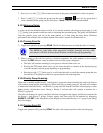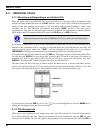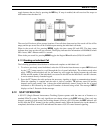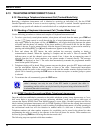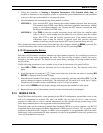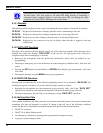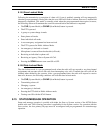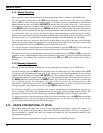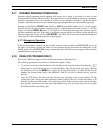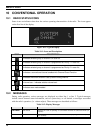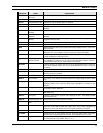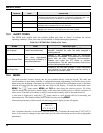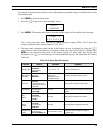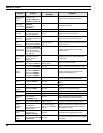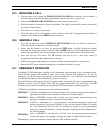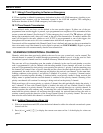
MM-014716-001
75
9.17 DYNAMIC REGROUP OPERATION
Dynamic regroup operation permits multiple talk groups (up to eight) to be added to a radio via the
Communications Systems Director (CSD). The radio must be pre-programmed to respond to regrouping.
Dynamic regrouping will not be activated in a radio until an activation message is sent by the system
manager. Each radio that receives and acknowledges regrouping instructions is successfully regrouped.
Pressing and holding the CLEAR (Scan Model) or CLR (System Model) button for 2.5 seconds toggles
the user into and out of the dynamic regroup group set. A double beep will sound for entry or exit. The
display will indicate REGR_0x where "x" is a digit of 1 to 8 indicating the group when dynamic regroup
has been enabled by the user. If the radio is in dynamic regroup and the user selects a group that has not
been regrouped, the display will show NO ENTRY. The radio will be prevented from transmitting and
receiving calls in this condition except for scanned groups.
9.17.1 Emergency Operation
If the pre-programmed group set on the currently selected system contains an EMER/HOME group and
the radio is in dynamic regroup, the radio will exit dynamic regroup and declare the emergency on the
HOME group. If no EMER/HOME group is present, the radio will declare the emergency on the currently
selected dynamic regroup group.
9.18 PAGE (P25 TRUNKED ONLY)
Page sends a PING message to a radio and functions similar to Individual Call.
The following procedures describe how to initiate and complete a Page.
1. To select a previously stored individual, select the Page mode from the menu followed by the
ramp control to scroll through the list of stored individuals. The selection mode rules apply. While in
the individual call list, the MENU key toggles the display between the call name and the unit ID
number. On System model radios, the individual’s unit ID can also be entered directly from the
keypad.
2. Press the PTT button; the radio performs the necessary signaling on the control channel. On the
calling radio, line 1 shows the called individual's name if found in the list of stored individuals or ID
followed by the logical ID number of the unit being called. If the receiving radio receives the Page
and responds, both radios will emit three high-pitched tones. The receiving radio will also display
PAGE and the ID of the calling radio.



